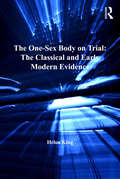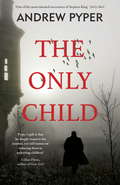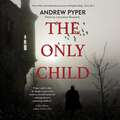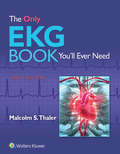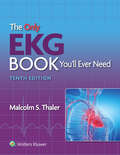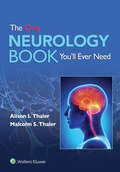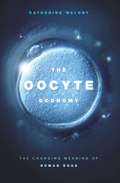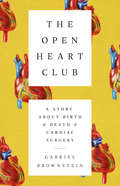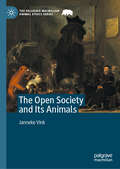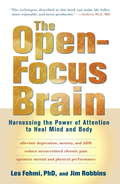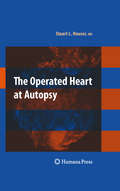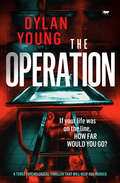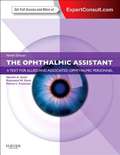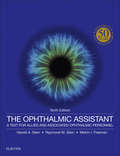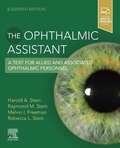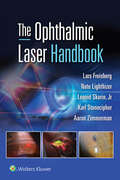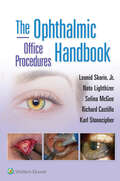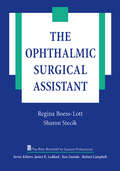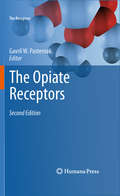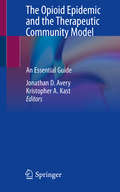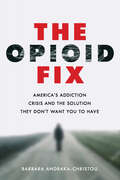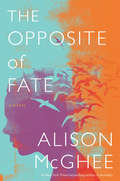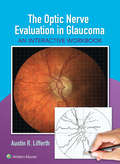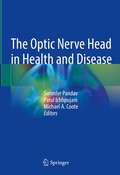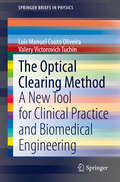- Table View
- List View
The One-Sex Body on Trial: The Classical And Early Modern Evidence (The History of Medicine in Context)
by Helen KingBy far the most influential work on the history of the body, across a wide range of academic disciplines, remains that of Thomas Laqueur. This book puts on trial the one-sex/two-sex model of Laqueur's Making Sex: Body and Gender from the Greeks to Freud through a detailed exploration of the ways in which two classical stories of sexual difference were told, retold and remade from the mid-sixteenth to the nineteenth century. Agnodike, the 'first midwife' who disguises herself as a man and then exposes herself to her potential patients, and Phaethousa, who grows a beard after her husband leaves her, are stories from the ancient world that resonated in the early modern period in particular. Tracing the reception of these tales shows how they provided continuity despite considerable change in medicine, being the common property of those on different sides of professional disputes about women's roles in both medicine and midwifery. The study reveals how different genres used these stories, changing their characters and plots, but always invoking the authority of the classics in discussions of sexual identity. The study raises important questions about the nature of medical knowledge, the relationship between texts and observation, and the understanding of sexual difference in the early modern world beyond the one-sex model.
The Only Child: The terrifying thriller that will blow your mind
by Andrew Pyper'One of the most talented successors to Stephen King' DAILY MAILA psychotic patient with two impossible claims. A leading forensic psychiatrist on the edge. It's not just Dr. Dominick's career that's in danger...Forensic psychiatrist Dr. Lily Dominick has evaluated the mental states of some of the country's most dangerous psychotics. But today's client - a man with no name, accused of the most twisted crime - struck her as different from the others, despite the two impossible claims he made.First, that he is more than two hundred years old and personally inspired Bram Stoker, Mary Shelley and Robert Louis Stevenson in creating the three novels of the nineteenth-century that define the monstrous in the modern imagination. Second, that he's her father.To discover the truth behind her client, Dr. Dominick must embark on a journey that will threaten her career, her sanity, and ultimately her life.Taut, terrifying and impossible to put down, The Only Child is perfect for fans of Lauren Beukes and Stephen King.Praise for Andrew Pyper:'One of the most talented successors to Stephen King' - DAILY MAIL'A smart, thrilling, utterly unnerving novel' - GILLIAN FLYNN, author of Gone Girl'Pyper is a master architect of dread' - LAUREN BEUKES, author of The Shining Girls'Genuinely terrifying' - SJ WATSON, author of Before I Go To Sleep'Readers will undoubtedly make comparisons to Stephen King' LIBRARY JOURNAL
The Only Child: The terrifying thriller that will blow your mind
by Andrew Pyper'One of the most talented successors to Stephen King' DAILY MAILA psychotic patient with two impossible claims. A leading forensic psychiatrist on the edge. It's not just Dr. Dominick's career that's in danger...Forensic psychiatrist Dr. Lily Dominick has evaluated the mental states of some of the country's most dangerous psychotics. But today's client - a man with no name, accused of the most twisted crime - struck her as different from the others, despite the two impossible claims he made.First, that he is more than two hundred years old and personally inspired Bram Stoker, Mary Shelley and Robert Louis Stevenson in creating the three novels of the nineteenth-century that define the monstrous in the modern imagination. Second, that he's her father.To discover the truth behind her client, Dr. Dominick must embark on a journey that will threaten her career, her sanity, and ultimately her life.Taut, terrifying and impossible to put down, The Only Child is perfect for fans of Lauren Beukes and Stephen King.Praise for Andrew Pyper:'One of the most talented successors to Stephen King' - DAILY MAIL'A smart, thrilling, utterly unnerving novel' - GILLIAN FLYNN, author of Gone Girl'Pyper is a master architect of dread' - LAUREN BEUKES, author of The Shining Girls'Genuinely terrifying' - SJ WATSON, author of Before I Go To Sleep'Readers will undoubtedly make comparisons to Stephen King' LIBRARY JOURNAL
The Only EKG Book You'll Ever Need (Board Review Ser.)
by Malcolm ThalerClear and concise, The Only EKG Book You'll Ever Need has provided quick and accurate discussions on using an EKG to diagnose cardiac and non-cardiac conditions for nearly 30 years. This ninth edition is packed with full-color illustrations, real-world clinical scenarios, and step-by-step instructions—giving you the practical guidance you need to use an EKG in actual clinical settings with patients.
The Only EKG Book You’ll Ever Need
by Malcolm S. ThalerFor more than 30 years, health care providers have turned to The Only EKG Book You’ll Ever Need for Dr. Malcolm S. Thaler’s clear and concise guidance on EKG use in everyday practice. Ideal for readers at all levels of experience, the tenth edition of this straightforward, highly visual resource presents must-know information on using an EKG to diagnose cardiac and non-cardiac conditions, with numerous EKG strips, clear illustrations, clinical examples, and case studies throughout. From cover to cover, Dr. Thaler’s commitment to “keeping simple things simple and making complicated things easy to understand” helps you learn and understand how to best use an EKG in actual clinical settings.
The Only Neurology Book You'll Ever Need
by Alison I. Thaler Malcolm S. ThalerClear and concise, The Only Neurology Book You'll Ever Need provides a straightforward and comprehensive overview of neurology. It covers all of the important neurologic diagnosis and management issues, along with clinically relevant anatomy and physiology. Written by Drs. Alison I. Thaler and Malcolm S. Thaler, this new title is packed with full-color illustrations, real-world clinical scenarios, and up-to-date guidelines and recommendations —giving you all the practical advice you need to master the challenging world of neurology.
The Oocyte Economy: The Changing Meaning of Human Eggs
by Catherine WaldbyIn recent years increasing numbers of women from wealthy countries have turned to egg donation, egg freezing, and in vitro fertilization to become pregnant, especially later in life. This trend has created new ways of using, exchanging, and understanding oocytes—the reproductive cells specific to women. In The Oocyte Economy Catherine Waldby draws on 130 interviews---with scientists, clinicians, and women who have either donated or frozen their oocytes or received those of another woman---to trace how the history of human oocytes' perceived value intersects with the biological and social life of women. Demonstrating how oocytes have come to be understood as discrete and scarce biomedical objects open to valuation, management, and exchange, Waldy examines the global market for oocytes and the power dynamics between recipients and the often younger and poorer donors. With this exploration of the oocyte economy and its contemporary biopolitical significance, Waldby rethinks the relationship between fertility, gendered experience, and biomedical innovation.
The Open Heart Club: A Story about Birth and Death and Cardiac Surgery
by Gabriel BrownsteinThis absorbing and poignant book is not merely the story of one writer's flawed heart. It is a history of cardiac medicine, a candid personal journey, and a profound reflection on mortality.Born in 1966 with a congenital heart defect known as the tetralogy of Fallot, Gabriel Brownstein entered the world just as doctors were learning to operate on conditions like his. He received a life-saving surgery at five years old, and since then has ridden wave after wave of medical innovation, a series of interventions that have kept his heart beating.The Open Heart Club is both a memoir of a life on the edge of medicine's reach and a history of the remarkable people who have made such a life possible. It begins with the visionary anatomists of the seventeenth century, tells the stories of the doctors (all women) who invented pediatric cardiology, and includes the lives of patients and physicians struggling to understand the complexities of the human heart. The Open Heart Club is a riveting work of compassionate storytelling, a journey into the dark hinterlands between sickness and health lit by bright moments of humor and inspiration.
The Open Society and Its Animals (The Palgrave Macmillan Animal Ethics Series)
by Janneke VinkThis book is an interdisciplinary study centred on the political and legal position of animals in liberal democracies. With due concern for both animals and the sustainability of liberal democracies, The Open Society and Its Animals seeks to redefine animals’ political-legal position in the most successful political model of our time. Advancements in modern science point out that many animals are sentient and that, like humans, they have certain elementary interests. The revised perception of animals as beings with elementary interests raises questions concerning the liberal democratic institutional framework: does a liberal democracy have a responsibility towards the animals on its territory, and if so, what kind? Do animals need legal animal rights and lawyers to represent them in court, and should they also be represented in parliament? And how much change of this kind could a liberal democracy really endure? Vink addresses these and other pressing questions relating to the political and legal position of animals in this persuasive and authoritative work, compelling us to reconsider the relationship between the open society and the animals in it.
The Open-Focus Brain: Harnessing the Power of Attention to Heal Mind and Body (Personal Development Ser.)
by Jim Robbins Les FehmiThis breakthrough book presents a disarmingly simple idea: The way we pay attention in daily life can play a critical role in our health and well-being. According to Dr. Les Fehmi, a clinical psychologist and researcher, many of us have become stuck in "narrow-focus attention": a tense, constricted, survival mode of attention that holds us in a state of chronic stress--and which lies at the root of common ailments including anxiety, depression, ADD, stress-related migraines, and more. To improve these conditions, Dr. Fehmi explains that we must learn to return to a relaxed, diffuse, and creative form of attention, which he calls "Open Focus."This highly readable and empowering book offers straightforward explanations and simple exercises on how to shift into a more calm, open style of attention that reduces stress, improves health, and enhances performance. The Open-Focus Brain features eight essential attention exercises for improving health, along with an audio CD in which the author guides the reader through fundamental Open-Focus exercises that can be used on a regular basis to enhance our health and well-being.Dr. Fehmi writes, "Everyone has the ability to heal their nervous systems, to dissolve their pain, to slow down and yet accomplish more, to experience the deeper side of life--in short, to change their lives for the better dramatically." At last readers can learn the techniques that Dr. Fehmi has offered to thousands of clients--the same drug-free, safe, and effective techniques that have led to remarkable and long-lasting results.The Open-Focus Brain offers readers a revolutionary, drug-free way to: * alleviate depression, anxiety, and ADD * reduce stress-related chronic pain * optimize mental and physical performanceThe eBook includes an audio program that provides further guidance on: * essential attention exercises from the book, led by Dr. Fehmi * how to "train the brain" to reduce stress, anxiety, chronic pain, and more * safe and effective techniques used in Dr. Fehmi's clinic for decades
The Operated Heart at Autopsy
by Stuart Lair HouserThe Operated Heart at Autopsy addresses the need of pathologists in practice and, especially, in training to achieve a new level of competence in dealing, at the time of autopsy, with the anatomic complexity of a heart that has undergone previous surgical treatment, whether that treatment occurred in the recent or remote past. Ready identification of post-operative morphologic changes in the heart will greatly increase the comfort level of the pathologist as he takes on the challenge of the operated heart. By drawing on lessons learned as a cardiac surgeon, the author offers reasonable guidelines to the pathologist facing this challenging task. Such guidelines include a methodical approach to assess multiple operative procedures on the heart. Previous surgery may include construction of coronary artery bypass grafts (CABG), replacement or repair of one or more heart valves, repair of one or more congenital heart anomalies, or some other procedure. Questions will arise at such an autopsy.
The Operation: A Tense Psychological Thriller that Will Keep You Hooked
by Dylan YoungA nurse’s abduction goes viral—and a surgeon’s life spirals—in a suspenseful tale by the author of The Appointment.Surgeon Jacob Thorn isn’t worried when the police interview him over nurse Katy Leith’s disappearance. She is a co-worker, nothing more. But when a leaked video of an argument between him and the missing woman goes viral, the social media reaction is vicious.When harrowing images of the kidnapped woman start to appear on his phone, along with a demand from her abductor that Jake confess to a crime he has no recollection of committing, he is forced to act or face terrifying consequences. He needs to delve into the past for answers. But time is running out for Katy. Will he admit to his failings and lose everything, or plead ignorance and let an innocent girl die?
The Ophthalmic Assistant: A Text for Allied and Associated Ophthalmic Personnel
by Harold A. Stein Raymond M. Stein Melvin I. FreemanExcel in your clinical responsibilities with The Ophthalmic Assistant. Whether you work in an ophthalmology, optometry, or opticianry setting, this best-selling reference delivers expert practical, up-to-date guidance on ocular diseases, surgical procedures, medications, and equipment as well as paramedical procedures and office management - providing all the knowledge and skills you need to be a valuable asset to your team. A real "how-to" textbook. Practical guidance to help you tackle the ophthalmic challenges and cases you face everyday
The Ophthalmic Assistant: A Text for Allied and Associated Ophthalmic Personnel
by Harold A. Stein Raymond M. Stein Melvin I. FreemanNow in its tenth edition, the best-selling The Ophthalmic Assistant, by Drs. Harold A. Stein, Raymond M. Stein, and Melvin I. Freeman, is your go-to resource for practical, up-to-date guidance on ocular diseases, surgical procedures, medications, and equipment, as well as paramedical procedures and office management in the ophthalmology, optometry, opticianry or eye care settings. Thoroughly updated content and more than 1,000 full-color illustrations cover all the knowledge and skills you need for your day-to-day duties as well as success on certification and recertification exams. This comprehensive text provides essential learning and practical guidance for ophthalmic assistants, technicians, medical technologists, physician assistants, and all others involved in ocular care, helping each become a valuable asset to the eye care team.
The Ophthalmic Assistant: A Text for Allied and Associated Ophthalmic Personnel
by Harold A. Stein Raymond M. Stein Melvin I. Freeman Rebecca SteinCovering all the knowledge and skills needed for everyday duties as well as success on certification and recertification exams, The Ophthalmic Assistant, 11th Edition, is an essential resource for allied health personnel working in ophthalmology, optometry, opticianry, and other eye care settings. Drs. Harold A. Stein, Raymond M. Stein, and Melvin I. Freeman are joined by new editor Dr. Rebecca Stein and several new contributing authors who provide practical, up-to-date guidance on ocular diseases, surgical procedures, medications, and equipment, as well as paramedical procedures and office management for today’s practice. This outstanding reference and review tool provides essential knowledge and guidance for ophthalmic assistants, technicians, and technologists as critical members of the eye care team.
The Ophthalmic Laser Handbook
by Nathan LighthizerAs new laser technology continues to emerge in the eye care field, there is a need for an up-to-date, comprehensive resource for eye care providers who are learning or currently performing these laser procedures. Edited by Lars Freisberg, Nate Lighthizer, Leonid Skorin, Jr., Karl Stonecipher, and Aaron Zimmerman, The Ophthalmic Laser Handbook is a practical, clinical guide that covers everything from indications and procedural techniques to contraindications and potential adverse events. This all-in-one reference, including over 45 videos of laser procedures in the e-version, is designed for all eye care providers—from those performing the procedures to those co-managing pre- and post-operative visits.
The Ophthalmic Office Procedures Handbook
by Leonid Skorin Nathan R Lighthizer Richard Castillo Selina McGee Karl StonecipherOffering practical guidance to those who are learning or already performing office-based ophthalmic procedures, The Ophthalmic Office Procedures Handbook reviews all current procedural and surgical techniques routinely performed in an office or minor-surgery suite. Written by Leonid Skorin, Nate Lighthizer, Selina McGee, Richard Castillo, and Karl Stonecipher, this unique handbook is an excellent resource for all eye care providers—both those performing the procedures as well as those who are co-managing pre- and post-operative visits.
The Ophthalmic Surgical Assistant (The Basic Bookshelf for Eyecare Professionals)
by Regina Boess-Lott Sharon StecikThe Basic Bookshelf for Eyecare Professionals is a series that provides fundamental and advanced material with a clinical approach to clinicians and students. A special effort was made to include information needed for the certification exams in ophthalmic and optometric assisting, as well as for surgical assistants, opticians, plus low vision, and contact lens examiners.This book contains basic guidelines and typical scenarios that the ophthalmic surgical assistant needs to know. The text begins with the operative patient, including preoperative testing and consents, and travels through the operating room experience. Topics include gowning and gloving, preparing trays and tables, and sterilization techniques. Detailed descriptions of common operative procedures such as plastics, cataract, corneal, and retinal procedures are also included. Operative notes are written on a minute-by-minute basis so the reader can become familiar with the instruments and other implements, and the order in which they are used. This text will help prepare the ophthalmic assistant for any setting, whether it be hospital or office based.
The Opiate Receptors
by Gavril W. PasternakThis new edition covers the latest knowledge on opiate receptors and related receptor subtypes. It discusses many topics pertaining to the unique integrated approach of correlating the biochemical, physiological and pharmacological aspects of opiate reaction.
The Opioid Epidemic and the Therapeutic Community Model: An Essential Guide
by Jonathan D. Avery Kristopher A. KastThis book aims to explore the evidence supporting the therapeutic community (TC) modality as a uniquely effective approach to care of individuals living with opioid use disorder and other addictions, and also to identify salient mediators of improved outcome, including long-term treatment and removal from the opioid-associated environment. The book includes multiple international perspectives and is designed for worldwide appeal—for countries that have established some TCs with success, those looking to improve care, and those looking to build them for the first time. Written by experts in addiction psychiatry and medicine, this book describes the unique role of therapeutic communities in treating substance use disorders, how the model has changed over time and adapted to diverse sociocultural contexts and systems of care, and how the TC model may serve an important population in the context of the current opioid epidemic. The chapters are written so as to be accessible for clinicians across specialties and professions. The Opioid Epidemic and the Therapeutic Community Model is an excellent resource for all professionals interested in diverse and effective models of care to treat opioid use disorder and other addictions, including addiction medicine specialists, psychiatrists, psychologists, rehabilitation administrators, hospitalists, social workers, public health workers, students, and the interested public
The Opioid Fix: America's Addiction Crisis and the Solution They Don't Want You to Have
by Barbara Andraka-ChristouWhy medication-assisted treatment, the most effective tool for battling opioid addiction, is significantly underused in the United States.Bronze Winner of the 2021 IPPY Book Award in Health/Medicine/Nutrition, Gold Winner of the 2020 Foreword INDIES Award in HealthAmerica's addiction crisis is growing worse. More than 115 Americans die daily from opioid overdoses, with half a million deaths expected in the next decade. Time and again, scientific studies show that medications like Suboxone and methadone are the most reliable and effective treatment, yet more than 60 percent of US addiction treatment centers fail to provide access to them. In The Opioid Fix, Barbara Andraka-Christou highlights both the promise and the underuse of medication-assisted treatment (MAT). Addiction, Andraka-Christou writes, is a chronic medical condition. Why treat it, then, outside of mainstream medicine? Drawing on more than 100 in-depth interviews with people in recovery, their family members, treatment providers, and policy makers, Andraka-Christou reveals a troubling landscape characterized by underregulated treatment centers and unnecessary ideological battles between twelve-step support groups and medication providers. The resistance to MAT—from physicians who won't prescribe it, to drug courts that prohibit it, to politicians who overregulate it—showcases the narrow-mindedness of the system and why it isn't working. Recounting the true stories of people in recovery, this groundbreaking book argues that MAT needs to be available to anyone suffering from opioid addiction. Unlike other books about the opioid crisis, which have largely focused on causal factors like pharmaceutical overprescription and heroin trafficking, this book focuses on people who have already developed an opioid addiction but are struggling to find effective treatment. Validating the experience of hundreds of thousands of Americans, The Opioid Fix sounds a loud call for policy reforms that will help put lifesaving drugs into the hands of those who need them the most.
The Opposite of Fate: A Novel
by Alison McGheeA young woman emerges from a lengthy coma to face the decisions made about her body—without her consent—in this powerful novel of reclamation and hope.Twenty-one-year-old Mallie Williams—scrappy, headstrong, and wise beyond her years—has just landed on her feet following a tumultuous youth when the unthinkable happens: she is violently assaulted. The crime leaves her comatose, surrounded by friends and family who are hoping against hopes for a full recovery.But soon Mallie’s small community finds themselves divided. The rape has left Mallie pregnant, and while some friends are convinced that she would never keep the pregnancy, others are sure that a baby would be the only good thing to come out of all of this pain. Who gets to decide? How much power, in the end, do we have over our own bodies? Mallie, her family, and her town find themselves at the center of a media storm, confronting questions nobody should have to face. And when Mallie emerges from the fog, what will she think of the choices that were made on her behalf?The Opposite of Fate is an intense and moving exploration of the decisions we make—and don’t make—that forever change the course of our lives.
The Optic Nerve Evaluation in Glaucoma: An Interactive Workbook
by Austin LifferthAll eye care providers should be proficient in evaluating the optic nerve for glaucoma in their patients. The Optic Nerve Evaluation in Glaucoma: An Interactive Workbook, gives you the practice you need to make sure your abilities are up to speed. This practical primer takes you from learning to applying – by creating a visually rich, interactive experience.
The Optic Nerve Head in Health and Disease
by Parul Ichhpujani Surinder Pandav Michael A. CooteThe book provides a detailed description in color format of the optic nerve head changes that occur in glaucoma. It explains the normal and variant anatomy of an optic nerve head and why certain discs are more or less likely to develop glaucomatous changes.This book attempts to explain the anatomical basis of common and not so common signs seen in optic nerve head and retinal nerve fibre layer as captured by a digital fundus imaging system and optical coherence tomography. It also includes optic nerve head conditions mimicking glaucoma. The book is relevant for practicing ophthalmologists, vision science researchers, clinical optometrists, postgraduate residents in ophthalmology, sub-specialty fellows as well as general ophthalmologists, neurologists and neurosurgeons.
The Optical Clearing Method: A New Tool for Clinical Practice and Biomedical Engineering (SpringerBriefs in Physics)
by Luís Manuel Oliveira Valery Victorovich TuchinThis book describes the Optical Immersion Clearing method and its application to acquire information with importance for clinical practice and various fields of biomedical engineering. The method has proved to be a reliable means of increasing tissue transparency, allowing the investigator or surgeon to reach deeper tissue layers for improved imaging and laser surgery. This result is obtained by partial replacement of tissue water with an active optical clearing agent (OCA) that has a higher refractive index and is a better match for the refractive index of other tissue components. Natural tissue scattering is thereby reduced. An exponential increase in research using this method has occurred in recent years, and new applications have emerged, both in clinical practice and in some areas of biomedical engineering. Recent research has revealed that treating ex vivo tissues with solutions containing active OCAs in different concentrations produces experimental data to characterize drug delivery or to discriminate between normal and pathological tissues. The obtained drug diffusion properties are of interest for the pharmaceutical and organ preservation industry. Similar data can be estimated with particular interest for food preservation. The free water content evaluation is also of great interest since it facilitates the characterization of tissues to discriminate pathologies. An interesting new application that is presented in the book regards the creation of two optical windows in the ultraviolet spectral range through the application of the immersion method. These induced transparency windows open the possibility to diagnose and treat pathologies with ultraviolet light. This book presents photographs from the tissues we have studied and figures that represent the experimental setups used. Graphs and tables are also included to show the numerical results obtained in the sequential calculations performed.
